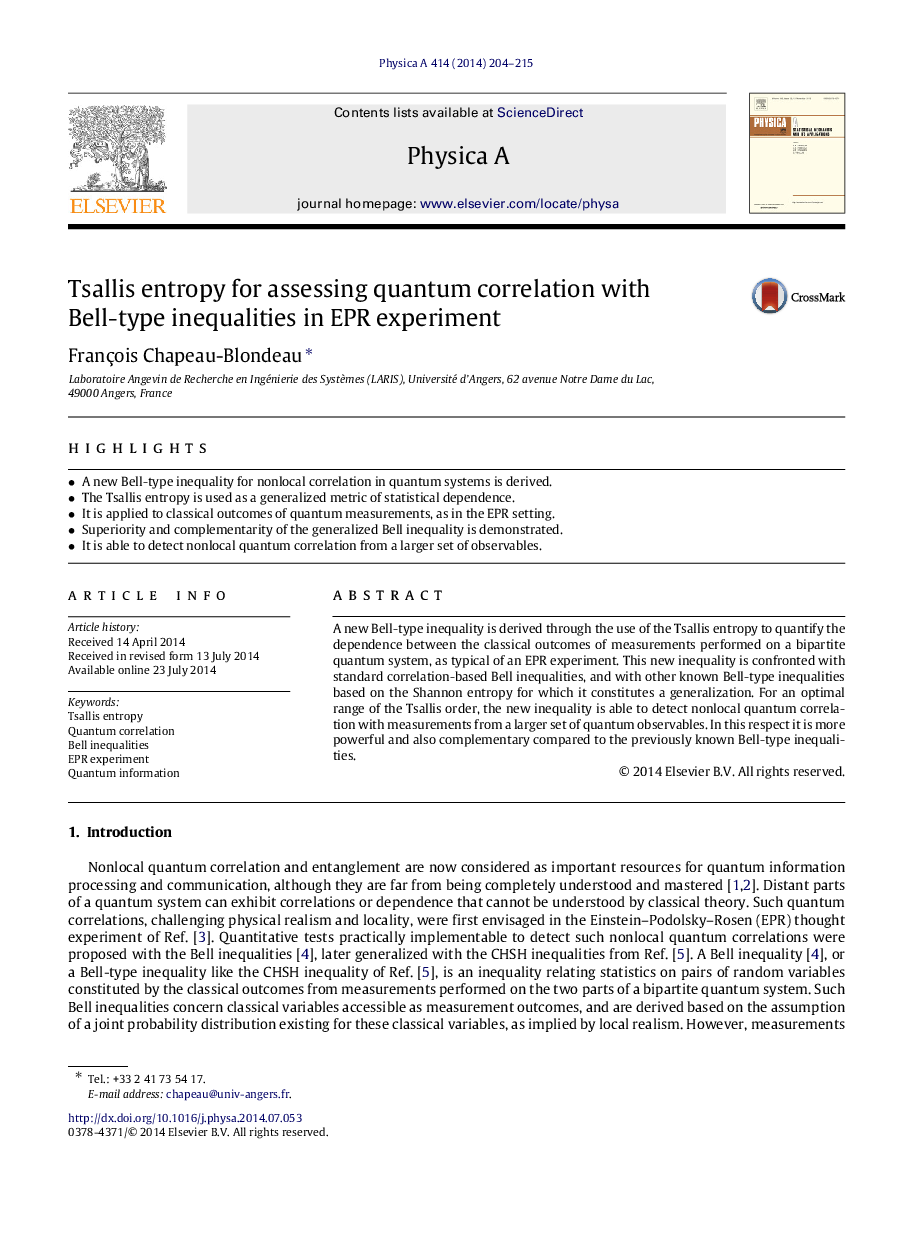| Article ID | Journal | Published Year | Pages | File Type |
|---|---|---|---|---|
| 975284 | Physica A: Statistical Mechanics and its Applications | 2014 | 12 Pages |
•A new Bell-type inequality for nonlocal correlation in quantum systems is derived.•The Tsallis entropy is used as a generalized metric of statistical dependence.•It is applied to classical outcomes of quantum measurements, as in the EPR setting.•Superiority and complementarity of the generalized Bell inequality is demonstrated.•It is able to detect nonlocal quantum correlation from a larger set of observables.
A new Bell-type inequality is derived through the use of the Tsallis entropy to quantify the dependence between the classical outcomes of measurements performed on a bipartite quantum system, as typical of an EPR experiment. This new inequality is confronted with standard correlation-based Bell inequalities, and with other known Bell-type inequalities based on the Shannon entropy for which it constitutes a generalization. For an optimal range of the Tsallis order, the new inequality is able to detect nonlocal quantum correlation with measurements from a larger set of quantum observables. In this respect it is more powerful and also complementary compared to the previously known Bell-type inequalities.
